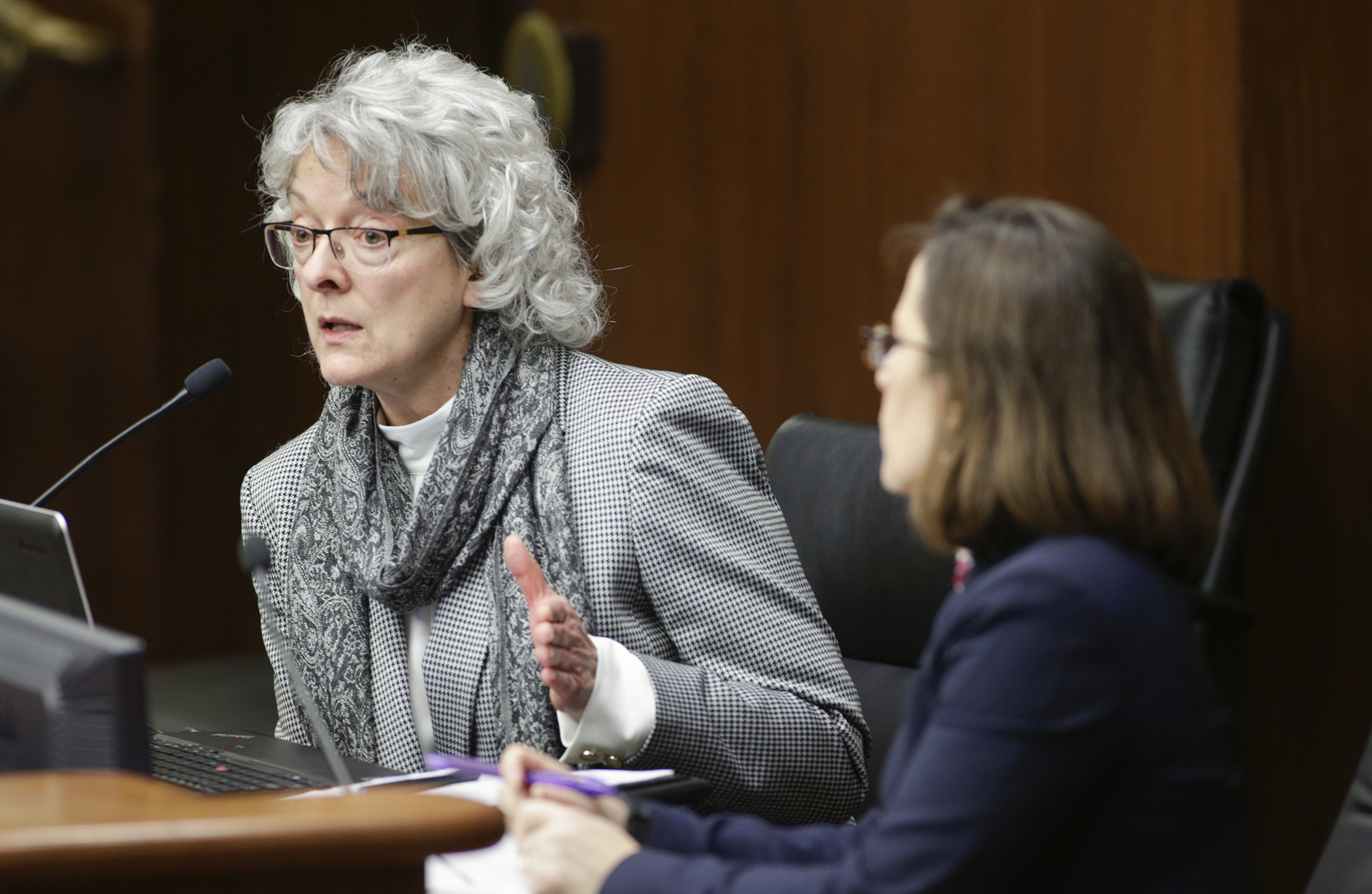OLA report on compensatory education revenue impact raises questions

The legislative requirement that school districts report annually on whether compensatory revenue is improving student achievement is neither possible nor realistic, the House Education Finance Division heard Wednesday.
“Simply put, the data are not available to isolate the impact of compensatory education revenue programs alone,” explained Judy Randall, deputy legislative auditor for the Office of the Legislative Auditor.
It was one of the key findings that that Randall, along with Jody Hauer, evaluation coordinator for the OLA, shared with the division during an informational hearing on the agency’s recently released Compensatory Education Revenue Report.
Compensatory aid
Compensatory education revenue is state funding that helps schools pay for the academic needs of students who are underprepared or who do not meet the performance standards of their age. The funding is allocated based on the number and concentration of low-income children within a school, as defined by the prior year’s count of students who receive free or reduced-price lunch. Higher concentrations of these students means more revenue per student. It has been a component of general education revenue since 1987.
Funding breakdown and uses
The state distributed $551 million in compensatory revenue in Fiscal Year 2018, generated by more than 329,000 students — 38% of all students that year.
The report found that more than half of the funding, 63%, went to schools within the seven-county metro area. It also found that a large share, 89%, of school districts outside the metro area had at least one-quarter of their students qualify for the aid, compared to 48% of metro districts.
Rep. Jim Davnie (DFL-Mpls), the division chair, asked if those figures were indicative of a concentration of poverty in the metropolitan area versus a broader distribution of poverty in the nonmetropolitan area.
“It’s just that there are low-income students all around the state,” Hauer said, “If you’re in a smaller district that has a smaller enrollment … that small number of kids might represent a fairly large percentage of the overall enrollment.”
Schools are allowed to use the funds in 12 ways, for a range of educational purposes, including hiring more teachers to reduce class sizes and purchasing instructional materials and technology. Neither information from districts nor the Department of Education offer much insight into how the funds are actually being used, the OLA report discovered.
Key findings
Other key findings from the report include:
- the funding distribution calculation relies on low-income student counts from the prior year, which are neither timely nor accurate;
- the statutory requirement that schools reserve an increasing percentage of the revenue for extended time activities, like afterschool programming, is not the best use of the revenue for all districts; and
- there’s a lack of clarity for school districts that choose to reallocate up to 50% of the revenue according to a plan adopted by the school board.
Recommendations
Recognizing that it’s unrealistic for districts to report on whether the aid is resulting in improved student outcomes, the OLA recommends the statute be repealed. In turn, it recommends districts be required to report on whether programs paid for with significant amounts of compensatory revenue are consistent with research-based best practices.
“We’re all about accountability, so it’s kind of unusual to hear us recommend eliminating a reporting requirement,” Randall said. “But we think there’s a better and more meaningful way to get accountability in how schools use these funds.”
Other key recommendations for the Legislature to consider include:
- changing the calculation of compensatory revenue from relying on prior year low-income student counts to other methods such as absentee rate, risk of not entering the next grade level, or existing enrollment in federal assistance programs;
- repealing the statute requiring school districts to use some of the funding solely for extended time programs; and
- clarifying the requirement for a school board-adopted plan when school districts reallocate compensatory revenue.
Related Articles
Search Session Daily
Advanced Search OptionsPriority Dailies
Ways and Means Committee OKs proposed $512 million supplemental budget on party-line vote
By Mike Cook Meeting more needs or fiscal irresponsibility is one way to sum up the differences among the two parties on a supplemental spending package a year after a $72 billion state budg...
Meeting more needs or fiscal irresponsibility is one way to sum up the differences among the two parties on a supplemental spending package a year after a $72 billion state budg...
Minnesota’s projected budget surplus balloons to $3.7 billion, but fiscal pressure still looms
By Rob Hubbard Just as Minnesota has experienced a warmer winter than usual, so has the state’s budget outlook warmed over the past few months.
On Thursday, Minnesota Management and Budget...
Just as Minnesota has experienced a warmer winter than usual, so has the state’s budget outlook warmed over the past few months.
On Thursday, Minnesota Management and Budget...